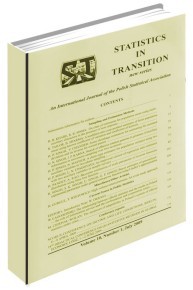Quality in Official Statistics Using European Statistics Code of Practise as a Framework
Quality in Official Statistics Using European Statistics Code of Practise as a Framework
Author(s): Berit OlssonSubject(s): Economy
Published by: Główny Urząd Statystyczny
Summary/Abstract: To build trust for the statistics in the society and for the national statistical institute (NSI) high quality of official statistics is a key issue. High quality of official statistics is therefore important. But how does the society know that the quality is good? And how can the NSI prove that the disseminated statistics have good quality? One way is to follow international guidelines and framework for quality measures and to publish quality indicators. One useful quality framework is European statistics Code of Practice, CoP. The European Code of Practice is based on 15 principles. Governance authorities and statistical authorities in the European Union commit themselves to adhere to the principles fixed in this code covering the institutional environment, statistical processes and outputs. A set of indicators of good practice for each of the 15 principles provides a reference for reviewing the implementation of the Code. It takes time to implement the CoP and to measure all indicators but the CoP may work as guide and some indicators can be chosen as a start. Institutional environment Institutional and organizational factors have a significant influence on the effectiveness and credibility of a statistical authority. Example of principles are professional independence, mandate for collection of data quality, commitment and statistical confidentiality. Statistical processes European and other international standards, guidelines and good practices must be fully observed in the processes used by statistical authorities to organize, collect, process and disseminate official statistics. Examples of principles are sound methodology, appropriate statistical procedures and non-excessive burden on respondents.Statistical output Available statistics must meet users´ needs. The important issues concern the extent to which the statistics are relevant, accurate and reliable, timely, coherent, comparable across regions and countries, and readily accessible by users. The documentation of the principles is of great importance for the users, especially the principles and indicators of the statistical output. The use of some kind of Metadata system is recommended. Statistics Sweden has been working with different aspects of quality over the time and CoP is today an important basement. During the last five years much attention has been given to the analysis of the statistical processes. For the moment the Quality Management system at Statistics Sweden include four key issues:• Quality framework: The EFQM Excellence Model• Methods for continuous improvement work: Six Sigma• ISO 20252 Market, opinion and social research• Methods for evaluation and follow-up: Internal auditing.
Journal: Statistics in Transition. New Series
- Issue Year: 12/2011
- Issue No: 3
- Page Range: 469-474
- Page Count: 6
- Language: English

